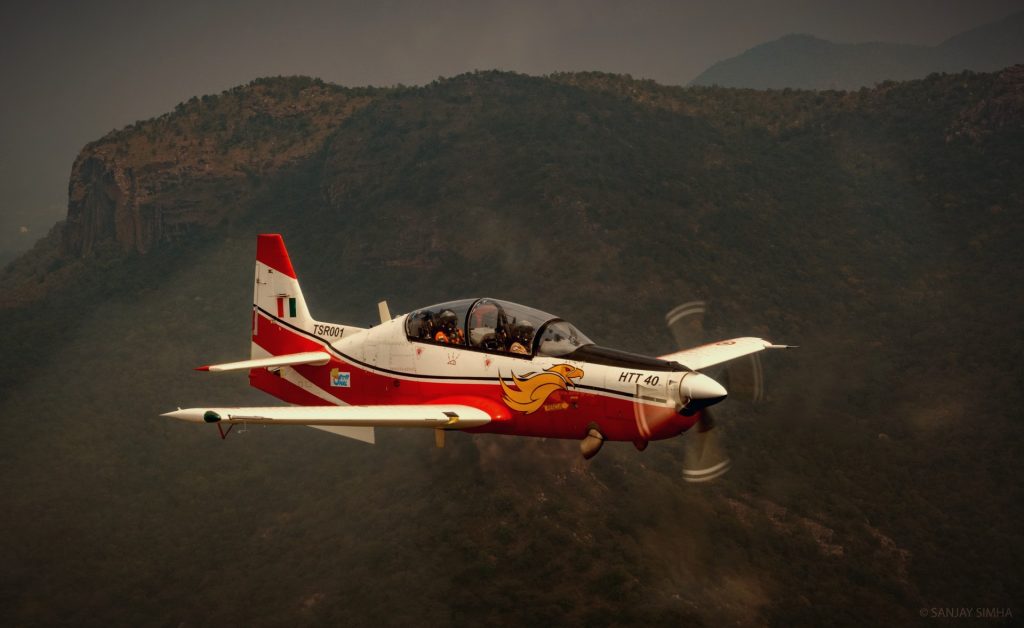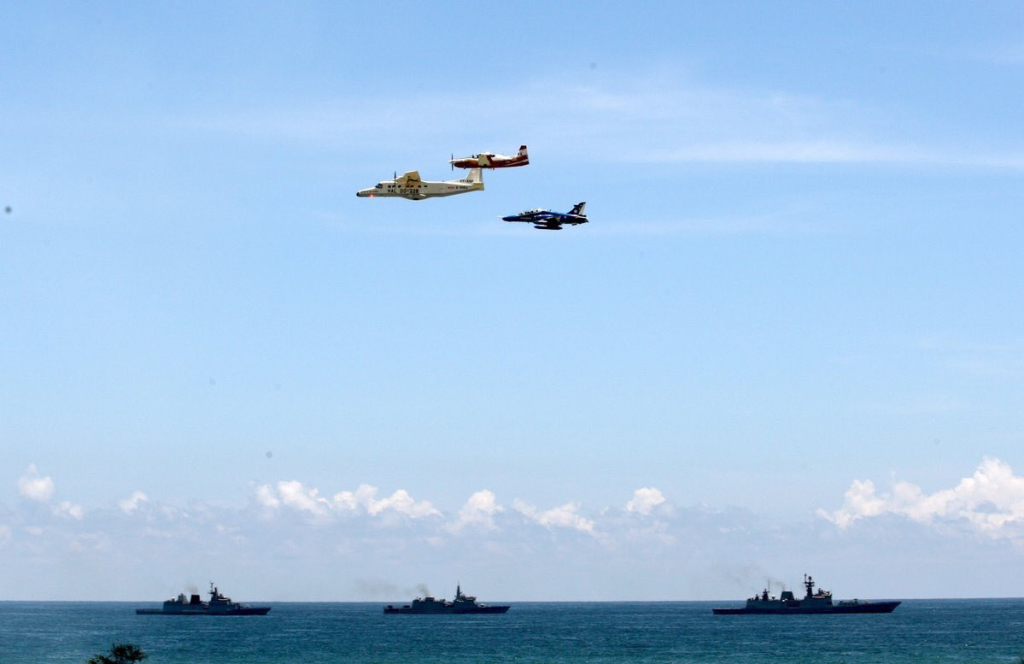
Ten years ago, the Indian Air Force wanted to kill the program. The Chief of Air Staff at the time declaring that the IAF neither wanted nor needed HAL’s HTT-40 basic trainer. Today, ten years after what could easily have been a kill shot, the IAF awarded an $830 million contract to Hindustan Aeronautics Ltd for 70 HTT-40 aircraft. A fightback from the dead to land a near billion dollar order is a story with all the drama and interdepartmental knives that adorn Indian defence contracting.
The HTT-40 program was first unveiled by HAL in February 2011 amidst the IAF’s active hunt for a basic propeller trainer aircraft to replace its rickety old HAL HPT-32 Deepak trainers. With no replacement ready — something the IAF feels was principally HAL’s fault — the IAF was forced to look abroad for these rudimentary planes as part of an expensive and ultimately ignominous import venture. In 2012, the IAF awarded Swiss airframer Pilatus a contract for 75 PC-7 Mk.2 aircraft. HAL attempted to blame its lack of a ready replacement to the HPT-32 a result of confused planning by both the IAF and HAL, but the customer wasn’t about to take the hit in a relationship where HAL had a smug monopoly over its contracts.
Former HAL chairman Ashok Baweja adds detail to what started as a troubled blamegame between HAL and the IAF. He tells Livefist, “The first proposal (for a new turboprop trainer) was given in 1999 when I was the Director D&D for a new trainer to replace the HPT-32 Deepak. The development program of the HTT 40 was lead by a brilliant and aggressive to achieve youngster Prashanth Bhaduria. Aircraft development always has challenges. Persistent pays.“
Deliveries of the PC-7 began in February 2013, timed with the Aero India show. But five days later, the then IAF chief Air Chief Marshal Norman Browne made headlines at the show with scathing words about the HAL’s proposed HTT-40 program. His words, delivered right at the time when a mock-up of the HTT-40 was unveiled to the world, was widely interpreted as a death blow. This was literally the chief of HAL’s biggest customer by far dismissing with contempt a program that the IAF had not asked for. The IAF chief confirmed to Livefist at the time that a formal recommendation had been forwarded to the Defence Ministry to kill the close the HTT-40 program.
Practically dead at birth by this time, the HTT-40 was kept on life support by HAL’s engineers and designers, while its powerful corporate team worked to fight off the vituperative headwinds from Vayu Bhawan. In 2014, the next IAF chief Air Chief Marshal Arup Raha seconded his predecessor’s annoyance with the HTT-40, signaling that the IAF would have nothing more to do with the project.
But the 75 PC-7s would meet less than half of the 181 such trainers required by the IAF to beef up the crucial first stage of its pilot training regimen. In February 2015, the Indian MoD cleared a follow-on purchase of 38 more PC-7 aircraft from Pilatus, an order that would take the total number of the Swiss airplanes in IAF service to 113. As a first shot in the arm for the nearly-left-for-dead HTT-40 program, it was decided that the remaining 68 of the requirement would be prospectively met by HAL’s aircraft.

Strengthened by the news, HAL speeded things up, managing to roll out the first HTT-40 prototype a year later in February 2016 and a first flight less than three months later in May. In an indication of HAL’s strong backroom work on the HTT-40, a ceremonial public flight in June 2016 was held with then Defence Minister Manohar Parrikar in attendance. Parrikar, an aggressive proponent of self-reliance in defence, became a powerful backer of the program, in many ways a lifeline for HAL. And that’s probably why then IAF chief Raha came round, announcing an official about turn in the air force’s stance on the HTT-40 — in September 2016, he said the IAF would order the HTT-40 in large numbers.
In February 2017, exuding confidence but still wary, HAL showed off the HTT-40 in a flight display at the Aero India 2017 show. A major attraction at the show, the HTT-40 appeared to have shaken off the caul it was born with. The aircraft looked ready, and the crew didn’t hesitate to flaunt it. That there was a long queue of customer demo flights didn’t hurt. Three months later in May 2017, the second HTT-40 prototype took off on its first flight.

In April 2018, an HTT-40 was flown off the coast of Chennai as part of an HAL pack for the DefExpo 2018 show in the southern metropolis. That November, the program entered a crucial spin test phase — a phase that had bedeviled HAL’s intermediate jet trainer program, the HJT-36 Sitara. You can read our detailed piece on that latter program and its recent milestones here. To the great relief of the test pilot team, the HTT-40 nailed its spin tests. You can read our detailed video piece on these tests here.
The HTT-40 was now well on its way to readiness for the customer. But what happened in June 2019 transformed the HTT-40 from a parallel trainer aircraft program to the only one on the IAF’s table. India’s Central Bureau of Investigation (CBI) registered a corruption case against Swiss aircraft maker Pilatus in the IAF’s PC-7 deal. The investigation ended all chances of a follow-on order for 38 PC-7 aircraft. The remainder of the IAF’s requirements would need to be met solely by the HTT-40.
In a major show of just how committed the IAF was now to the HTT-40, in November 2019 then IAF chief Air Chief Marshal RKS Bhadauria flew a sortie in an HTT-40 prototype. We reported that flight and its significance here.
In August 2020, the Indian MoD formalised the death of the PC-7 procurement in India by approving plans to procure 106 HTT-40 trainers to meet the remainder of the IAF’s turbo-prop trainer requirement. However, paperwork that had begun for the initial 68 aircraft prevailed, with an RFP issued to HAL in February 2021 for 70 aircraft, with a commitment to procure the remainder later.
In July 2022, HAL signed a deal worth over $100 million with Honeywell for 88 engines & maintenance and support services for the HTT-40 program. On March 1 this year, India’s apex Cabinet Committee on Security (CCS) provided a final stamp of approval on the $830 million contract to HAL, with the deal finally being signed today.

HAL needs to look for exports. Satisfaction with local sales has been the bane of most of our industries. Those who went out like IT have thrived. To that end HAL has a long way to go. They excel in criticism of foreign products when given an opportunity but fail to meet even basic standards consistently. The blame for wavering faith of customer is equally shared by HAL with the MOD.
[email protected]
Unless we manufacture aviation engine we cannot claim any aircraft to be indigenous. And this Aatmanirbharta is only in namesakes.
Engine is the core technology for any vehicle and Unless we master it we will always be dependent on others
And semiconductor chips fabrication
@piyush, we just can’t stop producing aircraft till we master technologies related to Aero Engines.
Even the trainer pushed by Chandigarh lobby had an American engine and parts from countries spread all over the globe.
HTT-40 is better than having a stew of a plane made of parts from various countries.
Bring in private sector for developing engines , support them , see the talent blossom . Aero engineers are going abroad for lack of opportunities
Great! Time the IAF put its money where its mouth is and support Indian designed and built aircraft.
Absolutely ! Some effort has just begun. Let’s hope it succeeds.
Are there plans for a light attack version? Seems India could really use a COIN variant along the lines of the Super Tucano.